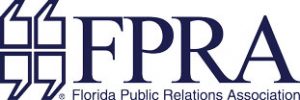Traditional thinking tells us “You can be anything you want to be if you just try hard enough” whereas the strength-based approach says “You can’t be anything you want to be, but you can be more of who you are!” Are you ready to be more of who you are?
This morning’s closing session is focused on The Strengths Movement and covers an understanding of the strengths movement; the difference between strength, talent, skill, and knowledge; how to identify what is best and most effective in you; strategies for leveraging your strengths and minimizing weaknesses; and establishing and following a plan to move forward.
Shaffer began with an adaptation of an amusing tale: The Animal School Fable by George Reavis.
Determining the difference between a skill, talent and strength:
- Skill is something that can be taught.
- Talent a natural way of thinking and behaving.
- Strength is the ability to consistently provide near perfect performance.
You know that a strength is a strength if: it comes easily; you don’t consciously think about it, you just do it; the more you do it, the better you become at it; the result makes you feel good!
Something that doesn’t come naturally and is difficult, at times seemingly impossible, to learn or is energy draining, and shows little improvement with repeated experience is not a strength.
A weakness is anything that gets in the way of excellent performance.
Shaffer asks how would you like to spend your day – playing to your strengths or wrestling with your weaknesses?
Utilizing The Clifton Strengths Finder from The Gallup Organization provides a 180 question assessment to determine the order of 34 talent themes; enables you to develop a common language; and increases self awareness. Although taking a formal assessment is not necessary, according to Shaffer it is extremely helpful. Shaffer goes on to list the 34 talent themes, expounding on the ones recognized by the audience. An analysis of the strengths-finder program and list of talents can be found here.
Once you know these things, what do you do? Spend some time observing yourself and others … determine what makes you/them tick. Link your strengths to performance goals, and leverage them accordingly. Re-evaluate your “so-called weaknesses”. Are they really weaknesses and how can you best manage them? Start using “the language”. Keep the focus!
At RTI Biologics, the culture changing process was a 7 year journey. All employees participated/and continue to participate in strengths finding assessment process to identify the order of their talent themes. Each employee was assigned a strengths coach to discuss themes that rose to the top and those that fell to the bottom. The strengths coaches work with employees to link strengths to performance goals. Strengths based language was infused into every part of the organization.
The result is an engaged workforce. Most employees get to do what they do best at least some part of every day. They enjoy a positive work environment, focusing what is right versus what is wrong. The change also enabled the company to weather some very difficult storms.
At the end of the day, what difference does the Strength-based Approach make? Imagine loving the role you are playing because you get to do what you do BEST every day. Your performance is excellent. You are having fun. You understand why you do what you do and why others do what they do. You call on the right strength at the right time and surround yourself with others that do the same.
Q: What book were you referring to?
A: The Strength Finder 2.0 Other good ones: Soar with Your Strengths, Strengths-based Leadership
Q: Do you require your new employees to take the assessment?
A: Yes
Comment: Our organization is the beginning stages of implementing this strategy. We are going to have to reapply for our positions and jobs will be retained on the basis of the assessments.
Q: Weaknesses – do you do anything with your employees to identify those and work with them on it?
A: That’s a challenge, because the philosophy says the best you can do with a weakness is to manage it – you will never overcome it. You shouldn’t let folks off the hook for their performance. You don’t excuse poor performance for lack of talent. It’s definitely tricky.
Q: Tell us more about the plan to introduce the program to employees?
A: In our case, there was change already in the works, so we knew to expect something different and wove this plan into the changes that were already in motion. There was a mass communication plan put into place which included training sessions and a consistently branded approach to implementing the plan. Everyone knew what was coming and what steps were going to take place. Internal communications vehicles carried the education throughout the organization. They have an “engagement team” instead of an “activities director” and the philosophy is inserted into everything already being done.
About the speaker
Carolyn Shaffer is the former vice president of human resources and organizational development for Regeneration Technologies, Inc. (now RTI Biologics, Inc.). Prior to joining the company in 1999, she owned and operated CJS Training & Development, a private consulting practice with the primary focus of designing and conducting training programs on a variety of topics. Before that, Shaffer worked for 12 years with General Electric Company/ GE Capital, holding various management roles in their Retailer Financial Services division.
Shaffer earned her master’s degree in business administration with a concentration in strength based leadership from the University of Nebraska and a bachelor’s degree in economics from Fairfield University. She is also a graduate of GE’s Financial Management program.

